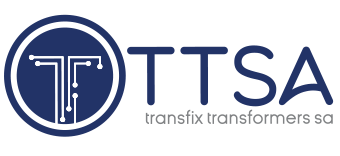South Africa’s decaying water, electricity and logistics infrastructure presents a R100-billion a year repair and refurbishment investment opportunity that could provide much-needed stimulus for the declining manufacturing sector, Steel and Engineering Industries Federation of Southern Africa COO Tafadzwa Chibanguza has said. “Infrastructure spend in terms of the big capital projects is important for long-term industrialisation. [However], there’s also an important discussion that needs to be had at an intermediate level. You can actually run a massive scale industrialisation project just by repairing and rebuilding the current infrastructure.
Wind energy company Nordex Energy South Africa, which is building a new wind turbine concrete tower factory in Jeffreys Bay, says the ongoing construction is benefitting the region. “The construction of the plant is stimulating the local economy and fostering growth in the local supply chain through increased demand for raw materials and related goods and services, which is benefitting local businesses and suppliers,” says Nordex Energy South Africa sales head for Africa David Moncasi Hortet.
Gaia Fund Managers is raising $200-million for investment in African renewable energy plants and power grids with the assistance of Apex Group. The money will be raised through the Gaia Africa Climate Fund which will be domiciled in Luxembourg to allow US and European investors direct access. Apex Group will act as fund administrator.
State-owned power utility Eskom says 6.6-million out of its 6.9-million prepayment meters have successfully been precoded to ensure that customers will be able to continue to seamlessly buy electricity beyond the November 24 deadline. This is the cut-off date for all prepaid meters in South Africa to be recoded to continue to accept prepaid tokens.
Renewable energy development company Enertrag South Africa is a sponsor and participant of Phase 2 of the wind industry’s experiential renewable energy conversation across local schools in Mpumalanga through the energyDRIVE initiative. The company says it recognises the importance of engaging with stakeholders in the Mpumalanga province, including civil society, the business community and government, to contribute towards an energy mix that is best for South Africa.
Electricity and Energy Minister Dr Kgosientsho Ramokgopa indicates that he is in favour of grid-access rules that ensure as much new capacity is added as quickly as possible regardless of whether that new generation is procured through public or private processes. The Minister was responding to a question as to whether upcoming Renewable Energy Independent Power Producer Procurement Programme (REIPPPPP) bidding rounds could be threatened if the Energy Regulator refused to allow Eskom to reserve grid capacity for such projects.
Electricity and Energy Minister Dr Kgosientsho Ramokgopa has committed not to dismiss the more than 4 000 public comments received in response to the draft Integrated Resource Plan 2023 (IRP2023), the content of which has been heavily criticised. Instead, he has promised to host workshops with stakeholders, especially those 200-odd who had made “substantive” submissions.
Electricity and Energy Minister Dr Kgosientsho Ramokgopa reports that a review of South Africa’s electricity pricing policy will be launched with the aim of addressing a rising affordability “crisis”, which is undermining electricity access for a growing number of poor consumers. The review would be undertaken in consultation with the South African Local Government Association, Eskom, the National Energy Regulator of South Africa (Nersa) and other stakeholders, and could have far-reaching implications for the way electricity tariffs are set and how low-income households are subsidised.
The Shoprite retail group has started wheeling renewable electricity at its home office in Brackenfell, Cape Town, making it the company’s third site to implement this energy solution. Wheeling involves the buying and selling of electricity between private parties, using an existing grid to transport power from where it is generated to an end-user.
The Presidential Climate Commission (PCC) is cautioning that South Africa may miss its 2030 decarbonisation target in light of a decision to further delay the decommissioning of three aged coal power stations and if new clean sources are not introduced in line with the country’s electricity generation roadmap. The warning is contained in the commission’s inaugural ‘South African State of Climate Action’ report, released on July 25.
INDUSTRY NEWS
- Eskom offers more details on envisaged roles of the NTCSA and the TSODecember 18, 2025 - 11:04 am
- NTCSA says any electricity deal to salvage Mozal must ensure its financial sustainabilityDecember 17, 2025 - 3:01 pm
- ENGIE expects to start construction of 240 MW Corona PV project in late 2026December 17, 2025 - 1:04 pm
WHERE TO FIND US
Address
9 Yellow Street
Botshabelo Industrial Area
Botshabelo, Free State
Call / Email Us
Tel: +27 (0) 61 956 6772
Email: info@transfix.co.za
